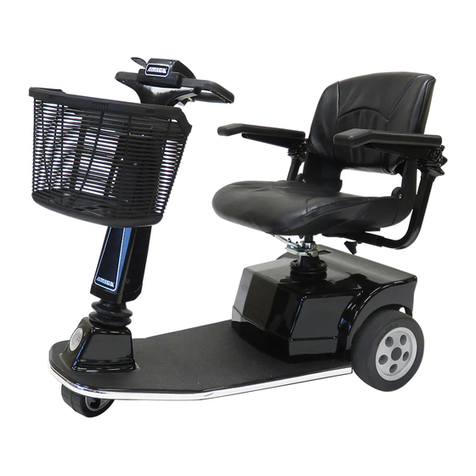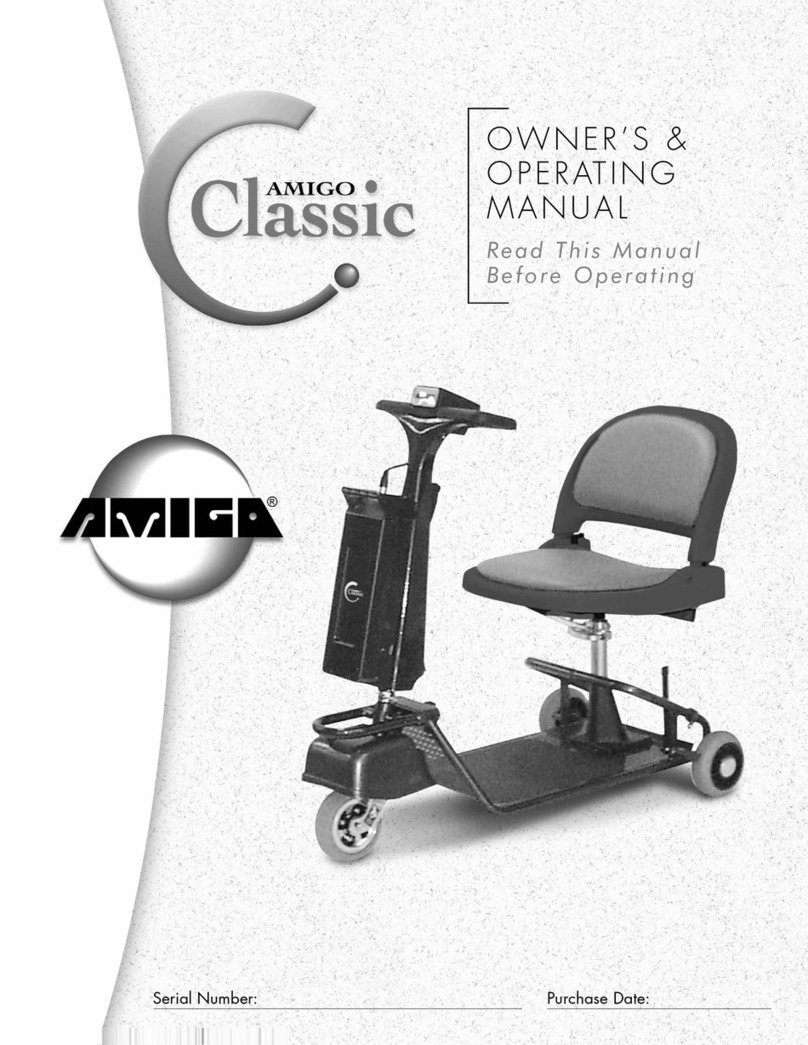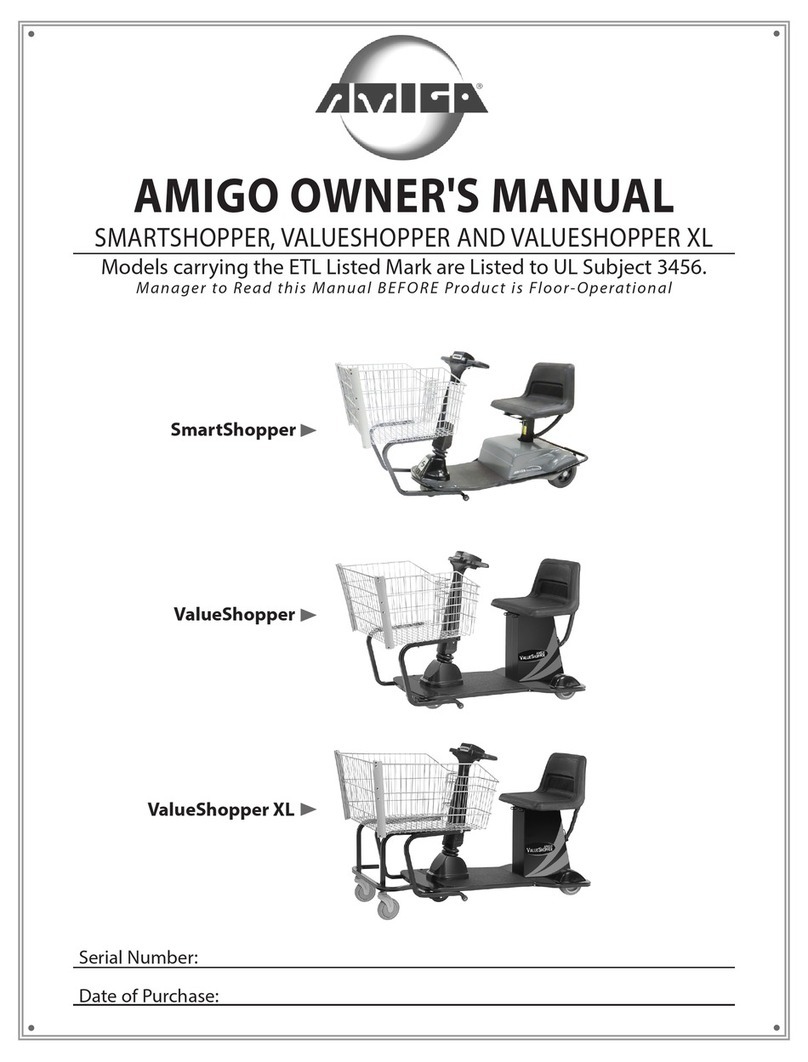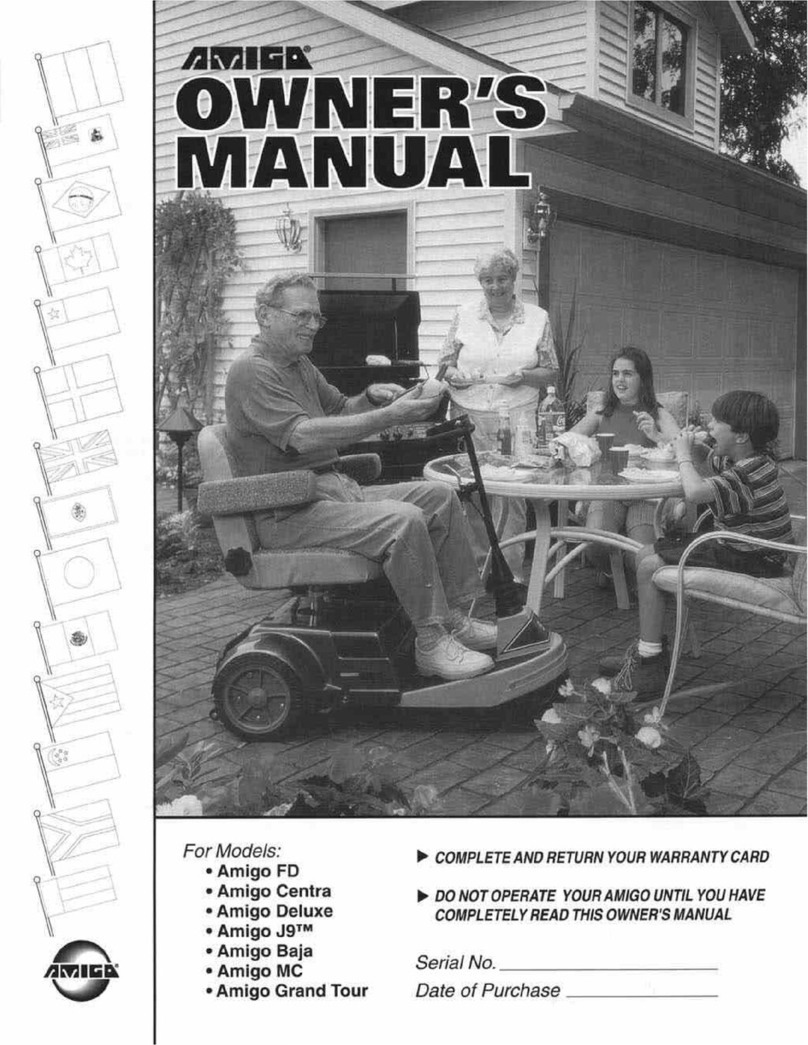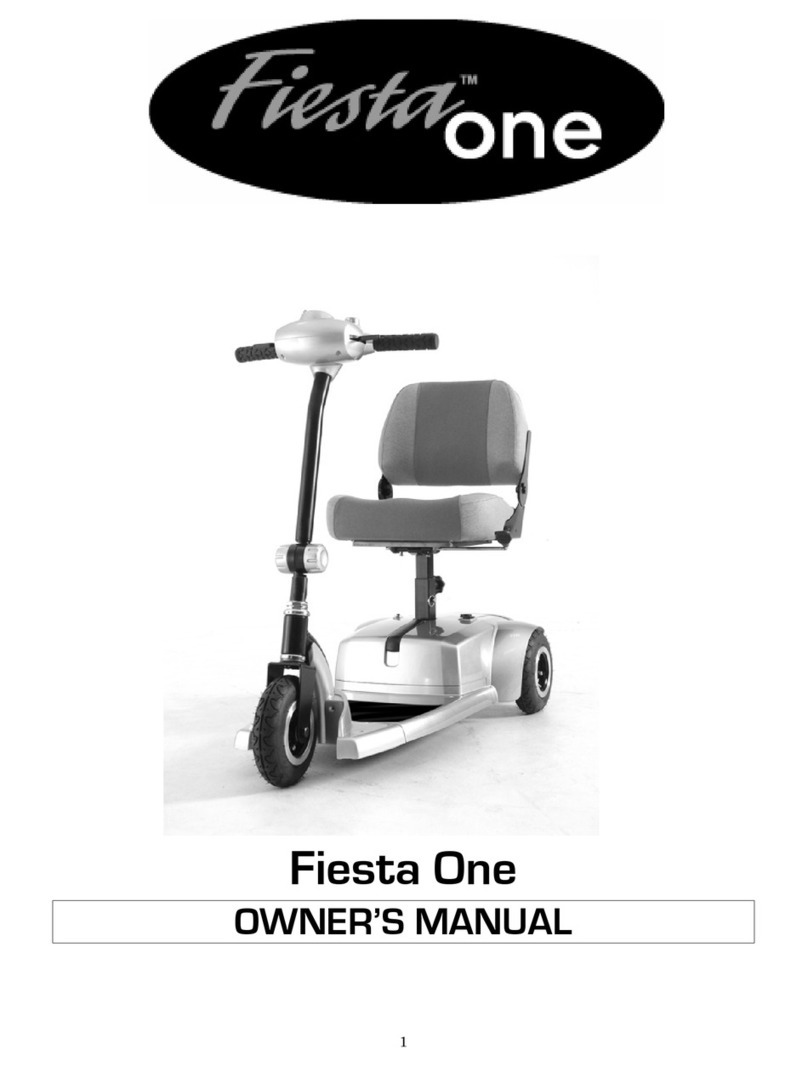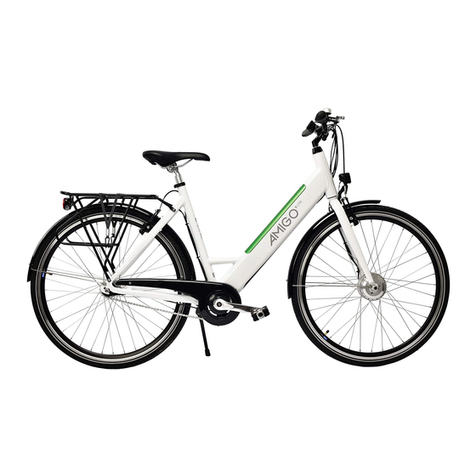
OPERATING YOUR AMIGO
on the right side of the handle enclosure.
2. Handlebar directions:
a. To move forward, red directional control button near
the right hand grip should be in the (F) position.
b. Twist right hand grip toward you to accelerate.
Hold at desired speed.
c. Release grip to stop.
d. To reverse, push directional control button to the (R) position,
then twist the hand grip toward you as you would to move forward.
The indicator light on the console will be 'on' when the switch is in reverse.
3. The TravelMate has two speed ranges. The black speed range switch is located on the lower left
corner of the enclosure (Figure 6). To engage a maximum speed of 4 mph (6.4 kph), push the
switch down toward the rabbit icon. To return to a normal speed of 3 mph (4.8 kph), push the
4. In the unlikely event you lose power, the drive can be put in freewheeling mode. Twist
the freewheeling lever (located on the right side of the front wheel, figure 7) into vertical
position. Some resistance while pushing in freewheeling mode is normal. To resume power
mode, twist lever back to horizontal position. Before driving, ensure tiller is locked in an
upright position.
PTF feature is intended as a safety measure to prevent “run away” situations, when in
freewheeling mode. The faster the Amigo is pushed (forward or reverse), the more resistance
is felt. Speed, not distance, engages PTF.
1. TURN KEY SWITCH TO "OFF" WHEN GETTING ON OR OFF THE AMIGO
2. DO NOT RIDE THE AMIGO WHILE IN FREEWHEELING MODE
3. PUSH FREEWHEELING LEVER TO HORIZONTAL POSITION BEFORE RESUMING
NORMAL USE OR TRANSFERRING ON/OFF VEHICLE.
DRIVING YOUR AMIGO
Steering the Amigo is easy and logical. Give wide clearance when turning so the rear wheels clear any obstacle. Shortcutting a
sidewalk corner can cause the back wheel to go off the sidewalk. Avoid this situation by steering an exaggerated wide arc around
the obstacles. If you must steer in a tight spot, such as entering a doorway or when turning around, stop and then apply power
gently.
TURNING THE KEY SWITCH OFF WHILE IN MOTION WILL BRING THE AMIGO TO A CONTROLLED STOP
Driving through doorways
Approach an unfamiliar door slowly. Does it have a knob or push bar? Does it open toward you or away from you? Think in terms of
using the power of the Amigo to do the work for you. Hold the doorknob or bar in one hand and apply the power with the other
hand. If the door is self-closing, you can go through allowing the door to close behind you. If it is not a self closing door, stop when
you are clear of the door and push it closed. If the door opens toward you, hold the knob or bar with one hand and slowly
accelerate in reverse, letting the Amigo do the work for you. When the door is open wide enough, accelerate forward leaving your
hand on the door to keep it free from touching the Amigo and letting go as you pass through the door jamb.
6 1-800-248-9131/ 989-777-0910
Speed range switch
Figure 6
Freewheeling lever
Figure 7
F
R
F
R
(horizontal)
Freewheeling
(vertical)
Forward
position
Reverse
position

